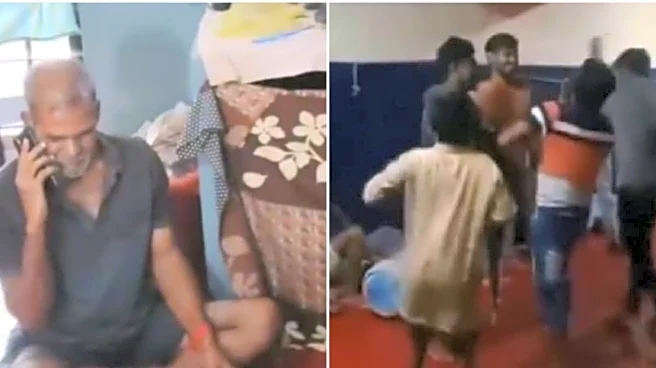A Thane Sessions Court has rejected the anticipatory bail pleas of two railway engineers accused in the June 9 Mumbra train incident that killed five passengers and injured nine, observing that the tragedy “was not merely an accident” but appeared to result from a “knowing default or omission” by officials responsible for track maintenance.
Additional Sessions Judge G.T. Pawar ruled that custodial interrogation of engineers Vishal Suresh Dolas and Samar Bahadur Yadav was essential, given the scale of the event and the need for a thorough investigation.
The engineers moved court after the Thane Railway Police filed an FIR alleging negligence that caused passengers to fall from two trains passing each other near Mumbra.
Technical Report Points to Negligence
The court relied heavily on
a technical inspection report prepared by experts from the Veermata Jijabai Technological Institute (VJTI), commissioned by the Railway Police Commissionerate. The VJTI team inspected the accident site and submitted its findings on October 14, concluding that Yadav, Dolas and senior officers were aware of the hazardous track conditions but failed to carry out critical repairs.
The report noted 17 mm gaps in the track, a 7 mm vertical misalignment, and a 4 mm lateral shift—irregularities that caused jerks to passing trains.
Prosecutors said heavy rainfall on May 24, 28, June 5, and June 6 had clogged a culvert beneath the track. Although a caution order was issued on June 6 warning of the need for maintenance, the work was not undertaken. Track No. 4 was also altered on June 5, but welding was left incomplete, increasing instability.
Investigators added that CCTV footage showed coaches wobbling as they passed the area. They also accused railway officials of failing to provide essential documents despite repeated requests.
Defence Arguments Rejected
The defence argued that the incident was an “unusual accident” and that the engineers were performing their duties responsibly. They attributed the deaths to overcrowding and passengers standing on the footboard with heavy backpacks. They also relied on a five-member railway expert committee report that purportedly cleared the engineers of wrongdoing.
However, Judge Pawar dismissed these claims, pointing out that the committee’s report lacked evidence such as photographs, a site inspection, or a panchanama. The court termed its conclusion—that backpacks caused the collision—“flimsy,” noting that no such bags were found at the site and no video or spot records showed backpacks thick enough to reduce clearance between the trains.
Track Faults at the Heart of the Tragedy
According to the court, the key factor behind the collision was the difference in cant between Tracks 3 and 4, which caused both trains to tilt inward, narrowing the space between them. These deficiencies were repaired only after the incident.
“If those deficiencies had been cured prior to the incident, this accident might not have happened,” Judge Pawar observed, adding that while the applicants sought a caution order, they failed to carry out the repairs it required.
The FIR had earlier triggered a flash strike by a railway workers’ union, disrupting services and causing additional fatalities as commuters attempted unsafe routes.
With custodial interrogation approved, investigators are expected to further probe the role of the engineers and other officials responsible for track safety.








/images/ppid_59c68470-image-176311506394929292.webp)





